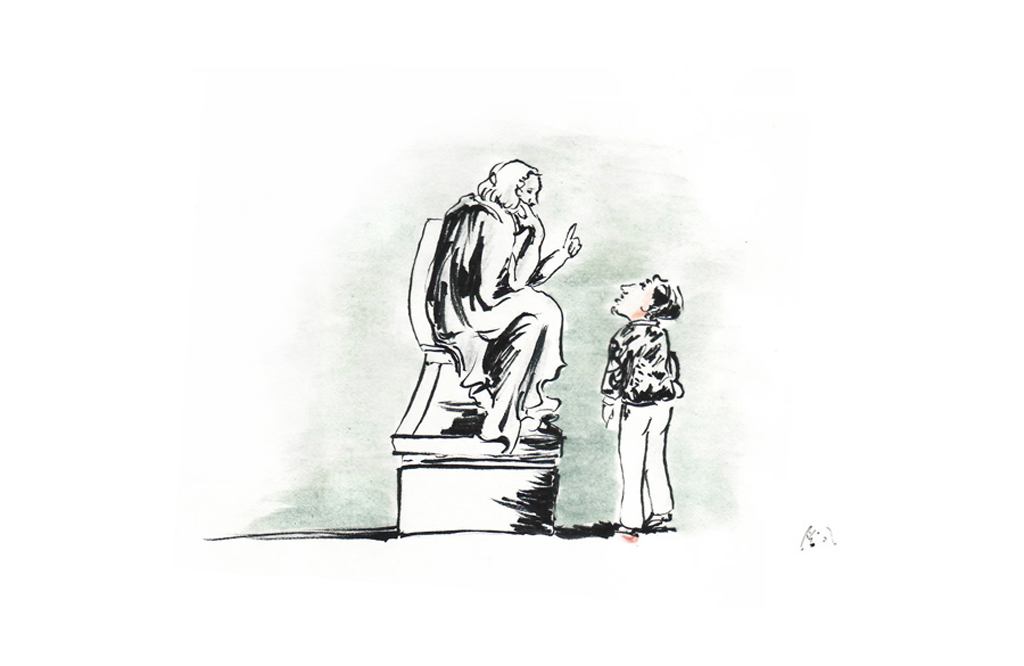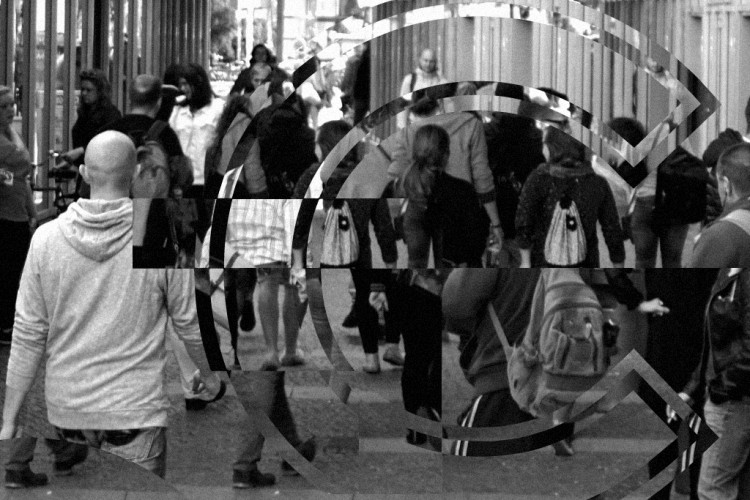
A lot of people are on a mission to “educate” these days. In curating, there are currently talks and debates around the “educational turn” (see here). Take a look at the way contemporary art exhibitions are being talked about in Jakarta: artworks are referred to as “cultural artefacts” made from the artist’s “ethnographic research” into a particular “case study” – all terminologies borrowed from fields in social studies. To talk about artworks in terms of compositions and artistic expressions now feel horribly dated, like we’re talking in a language used by generations who’s had their heyday.
There is a growing tendency for everyone involved in the art cycle – from gallery visitors and collectors, artists, curators, to gallery owners – to see exhibitions as sites for education. Cynics may say that education is so appealing because it gives us a certain social status, echoing a view that goes way back to the classical antiquity. In Ancient Greece, the liberal arts education provided skills that would distinguish people who were and weren’t free (read: slaves) in their society. To be educated is to be “free” – and “free people” inhabit a social rank above those who aren’t. “I’m educated”, as it goes, “so I’m better than you.”
But I have no time for bleak cynicism. It’s a waste of everyone’s time and energy to debate over whether or not exhibitions are worth the bother because it gives some groups of elites an illusion of status and privilege by dint of its intellectual currency when, quite obviously, exhibitions are capable of much more.
And I’m also thinking beyond art-as-activism here, beyond art and exhibitions as a means of empowering the people. Sure, there was a time when such heroism was appealing. But when this becomes the authoritative voice – proclaiming that art and exhibitions must have immediate and intentional socio-political dimensions – this also thwarts the creative potentials of exhibitions, of other things that it could activate.
So let’s get back to the initial claim. Putting cynicism in the bin, I think it’s infinitely more interesting to entertain that this claim is true. If it is true that exhibitions are sites of education, then what kind of learning is specific to it?
It’s certainly misleading to equate it with the institutional kind of education that takes places in schools, colleges, and universities. For one thing, it lacks formality. Consider the aims for formal education, for instance. Current institutionalized education is, at best, geared towards shaping experts in a given area, and at worse, ready-made industry workers. I’m pretty sure when we say exhibitions educate, we have different aims in mind.
Also, let’s not forget that there are no formal requirements. The strict “pass/ fail” system regulated in a classroom setting are certainly not the kind of requirements that operate in an exhibition. In fact, it is perhaps this informal educational atmosphere that’s drawing people to exhibitions as alternative places of learning.
In thinking about the kind of learning that specifically takes place in an exhibition, I’m reminded of something that the French theorists Gilles Deleuze and Felix Guattari said about their book being a ‘little machine’. Deleuze and Guattari wrote that their book, A Thousand Plateaus, has neither a subject nor an object, and it’s pointless for us to try and pin down what the book is actually about. Instead, according to them, the book should be seen in terms of what it ‘does’, rather than what it ‘is’.
To them, the book is a “machine”, in the sense that when it is “plugged into” other “machines” – say, the “reader-machine”, “the market-machine” and so on – its myriad potentials come to be realized. For instance, when connected to the “capitalist-machine”, the book becomes a commodity that animates a network of buying and selling. When connected to a “research-machine”, it animates a network of data analysis and verification. Depending on the other machines it is connected to, a book then becomes more than an inert object, but an active means that sets thinking and action in motion.
I’m pretty convinced that a parallel between Deleuze and Guattari’s idea of the book may be drawn with the contemporary art exhibition, not least because both share a particular kind of ‘machinic quality’. We may certainly adopt education as a theme for art exhibitions, as seems to be the growing trend. But the creative kind of learning that is unique to exhibitions, at least to me, seems to lie beyond that.
We do not learn from exhibitions like we do in schools and universities, where professors teach us a particular kind of knowledge and our mastery over it will be subject to rigorous examinations. We have not been educated by exhibitions simply because we ‘get’ what the artist is trying to say, and are able to say something critical about it.
I agree that art exhibitions carry educational potentials, but I think this potential goes beyond the exhibition’s capacity to give visitors new information about art, art’s history, the artist, media and technique and so forth.
The kind of leaning that takes place in an exhibition is one that – despite lacking the formality and strict regulations of institutional education – mobilizes new ways of thinking and doing. Exhibitions educate us when it ignites lines of inquiries that we never expected before, when it propels us into thinking and feeling in ways we never have. Certainly not only about art practices, but also about the way we live our lives. If there is anything specific about the kind of learning that happens in an exhibitions, it is its creativity: our learning is marked by a stimulation of creativity in our thoughts as well as actions, even after we move away from the exhibition.
But similar to Deleuze and Guattari’s “book-machine”, the “exhibition-machine” cannot operate on its own: it must be plugged into other machines. It is then up to the different “facilitator-machines” – the visitors, artists, curators, gallery owners, attendants, and critics – of how to actualize the educational potential of the exhibition-machine.











